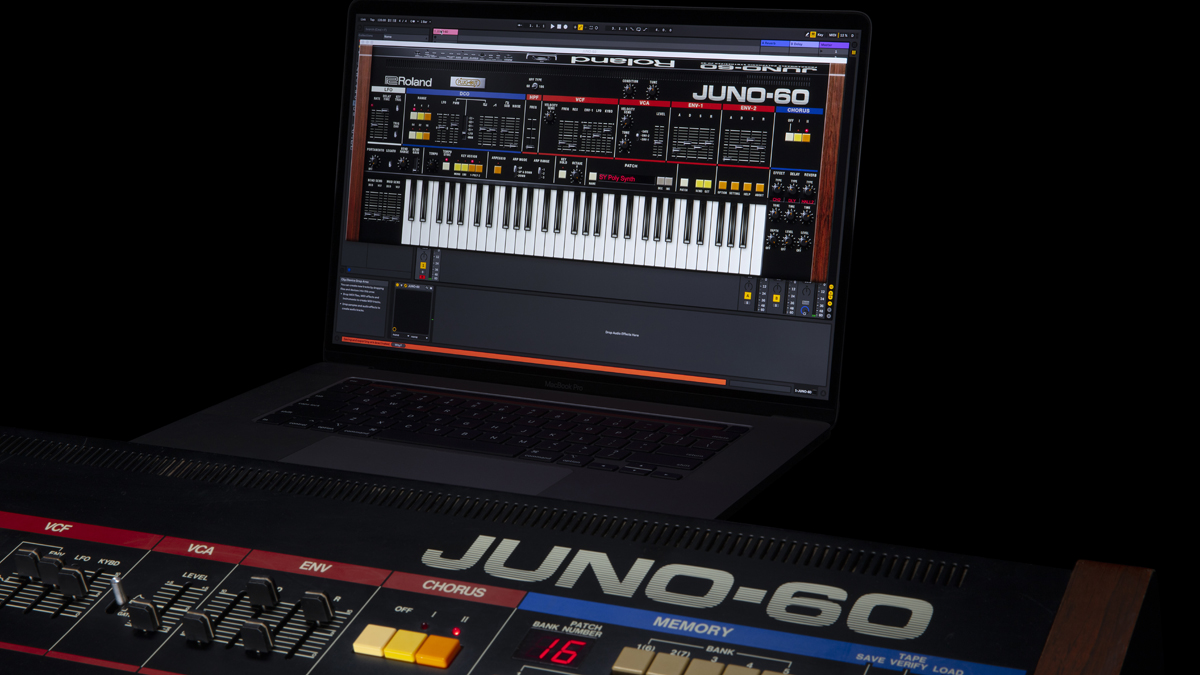Roland’s Juno-60 synth plugin brings back an ‘80s classic, complete with “odd quirks and charming limitations”
Plus, you get the Juno-106 filter and BOSS CE-1 chorus
Roland might not be too keen on releasing direct hardware reboots of its classic analogue synths, but it’s certainly got no problem doing it in software. The latest back catalogue classic to get the plugin treatment is the Juno-60, and it’s available now via the Roland Cloud.
Manufactured between 1982 and 1984, and one of the defining synths of that decade, the Juno-60 is a much-loved polysynth with a single DCO, sub-oscillator and VCF. There’s also that famous Juno chorus effect.
Roland’s emulation is powered by its ACB (Analog Circuit Behaviour) modelling technology and promises to recreate the original synth’s “odd quirks and charming limitations”. There are some new features, too; you can choose between the standard Juno-60 filter and the high-pass filter circuit from the Juno-106, for example.
Other enhancements include an extended oscillator range and a second envelope. As on the original, you get two chorus modes plus a third ‘secret’ one that’s accessed by pressing both chorus select buttons at the same time, and there’s now an extra chorus option based on the sound of the BOSS CE-1 pedal. Reverb, delay, flanger and overdrive effects are here, too.

As well as operating as a VST/AU/AAX plugin on PC and Mac, the Juno-60 also supports Roland’s Plug-Out format, meaning that you can use it in the company’s System-8 hardware synth. You can also use the System-8 or Roland Boutique JU-06/JU-06A to provide hardware control of the plugin.
The Juno-60 is part of the Roland Cloud Legendary series, which is available on the Ultimate subscription tier of the service. Anyone with a Roland account can also purchase the plugin outright via the Lifetime Keys option for $149.
Find out more on the Roland Cloud website.
Get the MusicRadar Newsletter
Want all the hottest music and gear news, reviews, deals, features and more, direct to your inbox? Sign up here.



I’m the Deputy Editor of MusicRadar, having worked on the site since its launch in 2007. I previously spent eight years working on our sister magazine, Computer Music. I’ve been playing the piano, gigging in bands and failing to finish tracks at home for more than 30 years, 24 of which I’ve also spent writing about music and the ever-changing technology used to make it.
“Excels at unique modulated timbres, atonal drones and microtonal sequences that reinvent themselves each time you dare to touch the synth”: Soma Laboratories Lyra-4 review
“A superb-sounding and well thought-out pro-end keyboard”: Roland V-Stage 88 & 76-note keyboards review









